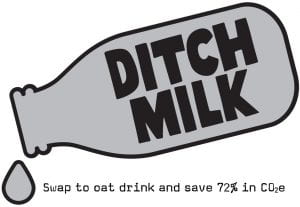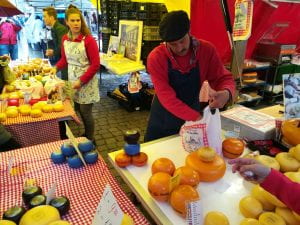Foremost on my parents’ Netherlands holiday agenda was buying cheese. It seemed quite natural, given that that places in Netherlands, such as Gouda and Edam, actually have types of cheese named after them. Milk and other dairy products are exceedingly delicious too – coming from Singapore where almost all our food is imported, there was an incomparable freshness in the dairy products we tasted during our Dutch holiday in May 2019.
I had assumed that diary was an integral part of Dutch identity, that when I saw advertisement posters in Rotterdam, Utrecht and Amsterdam saying “Ditch Milk”, I thought they must have been advertisements for a certain brand of dairy milk called ‘Ditch’, a brand name which I thought the company probably chose due to its similarity to the word ‘Dutch’. An interesting way to call on draw on national identity to market one’s products! Or perhaps it was a piece of government-led campaign to tease the Dutch into asking themselves what would happen in dairy was no longer part of their culture, therefore reinforcing national identity? However, on closer inspection of the advertisements, I realised that the mastermind of these advertisements was Oatly, a Swedish company that produces oat milk (https://www.oatly.com/nl/the-oatly-way). A very clever piece of marketing in the Netherlands!

Example of advertisement by Oatly in Dutch cities (source: www.oatly.com/nl/ditch-milk)
It takes two hands to clap, and Oatly’s advertising prominence in the large Dutch cities is also in part supported by Dutch receptivity to non-dairy milk. The reasons? One is probably health: a Dutch friend prefers giving her daughter oat milk as she thinks dairy products could cause immune-sensitive responses. The other, and probably more dominant reason, is the environment. Compared to dairy milk and other non-dairy milk, oat milk has one of the lowest environmental impacts. According to Poore and Nemecek (2018) and an April 2019 article in the New York Times (https://www.nytimes.com/interactive/2019/04/30/dining/climate-change-food-eating-habits.html?smtyp=cur&smid=tw-nytclimate&fbclid=IwAR0doAg3nrPIhDSyCQUMOcKVif2zqUD9qvrLkkeSNjUF4DqvoZ_YbxRoR68), producing one litre of oat milk generates 0.9kg of CO2 emissions, requires 0.8m2 of land and uses 48 litres of water. In contrast, milk from cows generates 3.2kg of CO2 emissions, requires 9m2 of land and uses 628 litres of water. Compared to oat milk, that’s more than triple the CO2 emissions, more than 10 times of land requirement, and 13 times the water usage!
While dairy milk has been traditionally integral to Dutch identity for centuries, I salute Dutch progressiveness in re-evaluating their identity in response to environmental needs. Based on my observations from my 8-day trip, I find that they are firm about implementing environmental actions. For example, airports typically want to create all sorts of conveniences for travellers, but the Amsterdam Schipol airport explains clearly to customers that plastic bags are chargeable. Kudos! Dutch society seems very dynamic and their innovativeness, and in today’s age of environmental grief, it is encouraging to see these qualities being applied to address environmental problems.

A shop in the Amsterdam Schipol airport firmly explaining to travellers that plastic bags are chargeable


Leave a Reply